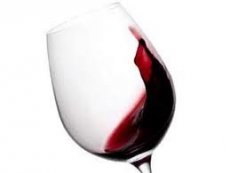New publications
Red dry wine has a positive effect on the health of older adults
Last reviewed: 01.07.2025

All iLive content is medically reviewed or fact checked to ensure as much factual accuracy as possible.
We have strict sourcing guidelines and only link to reputable media sites, academic research institutions and, whenever possible, medically peer reviewed studies. Note that the numbers in parentheses ([1], [2], etc.) are clickable links to these studies.
If you feel that any of our content is inaccurate, out-of-date, or otherwise questionable, please select it and press Ctrl + Enter.

Moderate consumption of dry red wine has a positive effect on the health of older people, US scientists have found. After conducting a series of experiments on mice, the Daily Mail reports, they found out that the ingredient contained in wine - resveratrol - not only helps break down cholesterol and prevent cancer, but also helps maintain balance when walking.
If resveratrol has a similar effect on the human body, it may well prevent painful bruises and fractures from falls, from which many pensioners recover with great difficulty, the researchers note.
"We hypothesize that natural compounds like resveratrol, which can be taken as supplements or through a special diet, may reduce the disability of the aging population," said one of the scientists involved in the trials. This could improve the quality of life of older people and reduce the risk of hospitalization due to falls.
During the experiments, the scientists administered resveratrol to young and old mice for 8 weeks and then tested their ability to walk across a bar while maintaining balance. At first, the old mice had difficulty doing this, but after a while they moved as easily as the young mice.
Scientists say it is not yet clear why resveratrol, which is found in grape skins and gives wine its red colour, improves balance. They suggest it may do so by renewing cells in the part of the brain that controls balance when walking.

 [
[